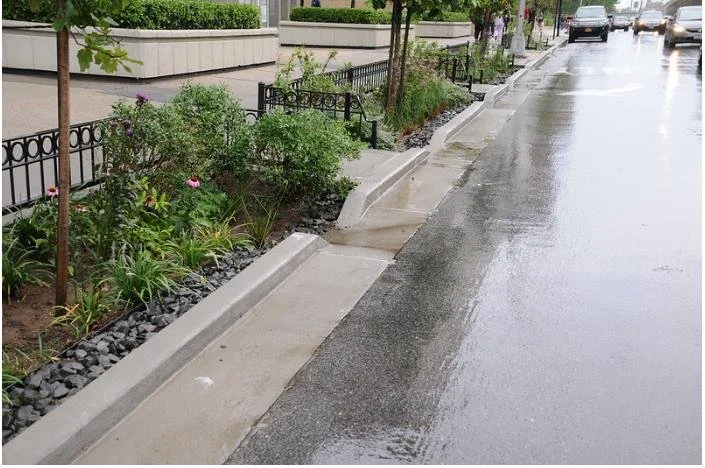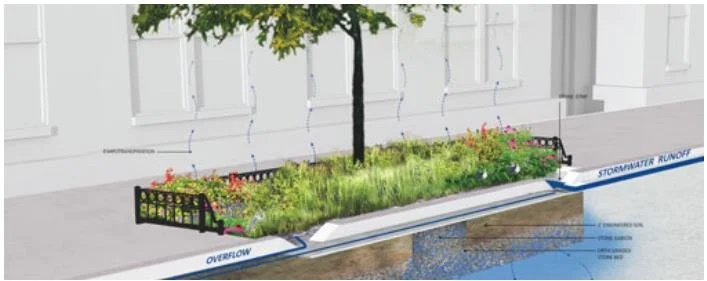green infrastructure
Green infrastructure uses natural and engineered systems like permeable pavement and rain gardens to manage stormwater, reduce flooding, and improve environmental quality in urban areas.
Permeable Pavement
Pavement designed with high porosity that lets rainwater pass through and soak into the ground below, helping to manage stormwater naturally.
Costs
Permeable concrete and asphalt: $6–$15 per square foot
Permeable pavers: $8–$40 per square foot
Key Considerations
Soil type affects installation methods and requirements
Placement of foundation walls and underground utilities must be considered
Pros
Reduces runoff
Can reduce related stormwater engineering and infrastructure needs
Less need for de-icing treatments
Cons
High installation costs
Needs regular maintenance and cleaning (potential for clogging)
Not suitable for all applications
Representative Use Cases
Madison, WI
Field Conditions
Permeable pavement works best in low traffic locations where managing stormwater is a priority. Ideal applications include low-volume roads, residential driveways, sidewalks, parking lots, utility and access roads, emergency access lanes, fire lanes, and alleys.
rain gardens
Rain gardens are shallow, landscaped depressions designed to capture and absorb rainwater runoff from hard surfaces like roofs, driveways, and streets.
Costs
Typically ranges from $10 to $20 or more per square foot.
Key Considerations
Location of underground utilities
Availability of right-of-way space
Soil type and drainage capacity
Site slope and grading for proper water flow
Pros
Reductions in roadway ponding/flooding
Improve water quality
Habitat creation
Cons
Space limitation in urban areas
Potential for mosquito breeding
Long-term performance uncertainty





